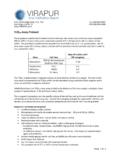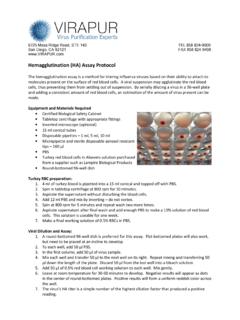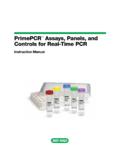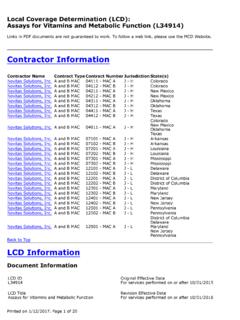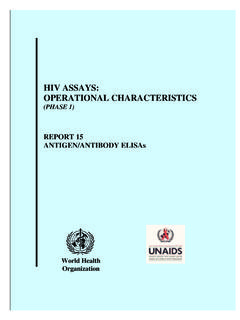Transcription of Phage Plaque Assays - Virapur
1 6725 Mesa Ridge Road, STE 140 TEL 858 824-9000 San Diego, CA 92121 FAX 858 824-9408 Phage Plaque Assays The Plaque assay is a method for titering bacteriophage. You can visualize plaques if you spot the Phage on a lawn of actively growing compatible bacteria. Each Plaque indicates an initial infection with one Phage followed by lysis of neighboring bacteria in the lawn. You can quantitate the number of Phage in a sample plating dilutions you can either spread your dilution on one plate and use five plates for five dilutions or spot your dilutions in circles on the plate. You will be able to use one plate to get your result. T7 Phage Plaque assay Protocol This assay is used for recombinant T7 Phage which has been engineered to express target proteins on its surface. IPTG is required in this system to induce capsid protein production in the particular bacterial strain used.
2 Plating of other Phage such as M13 or M2 do not require IPTG. Equipment and Materials Required LB media LB plates Agar IPTG Antibiotic type Bacteria Procedure 1. Grow overnight culture. 2. Prepare LB plates. 3. Prepare top agar ( agar per 100 ml of LB Broth). 4. Dilute overnight culture approx. 1:10. Grow at 37 C until OD600 is This takes 2-4 hrs. 5. Warm plate by placing in 37 C incubator. 6. Melt top agar. 7. Make dilutions of Phage . Make 102, 104, 106, 108 dilutions by serially adding 10 l of Phage packaging reaction to 1 ml LB. With each step use 10 l from previous and add to 1 ml of LB. 8. In 5 ml culture tubes, when top agar has sufficiently cooled, Add 250 l bacterial culture, Add 3 l antibiotic (1000x), Add 3 l IPTG (1M), Add 3 ml top agar just prior to pouring onto plate. 9.
3 Pour onto warmed plate. Leave until top agar hardens. 10. Spot 5 l of each dilution onto the plate. Do 3 spots for each dilution. 11. Leave overnight at room temperature or leave at 37 C for 2-3 hours. 12. Calculate titer: Dilution factor X # plaques / amt plated (5 x 10-3ml) = # pfu/ml In this photo: 5 l of Phage dilutions plated on freshly plated bacterial lawn. Plaques were visible after overnight incubation at 37oC. 50 plaques x 109 / ml = titer of 1012 PFU per ml Dilution: 10-7 10-8 10-9
